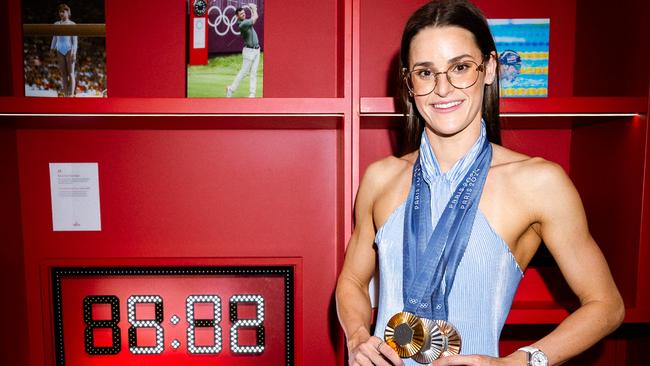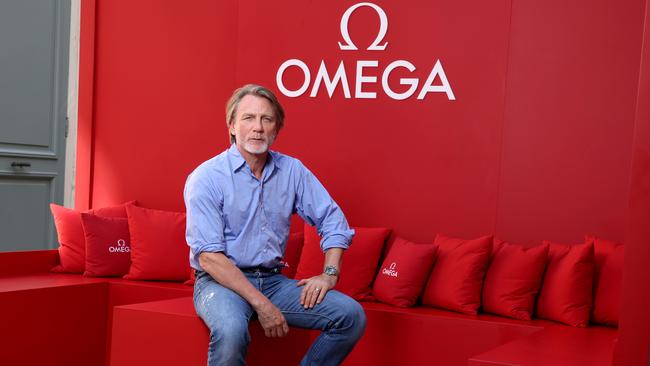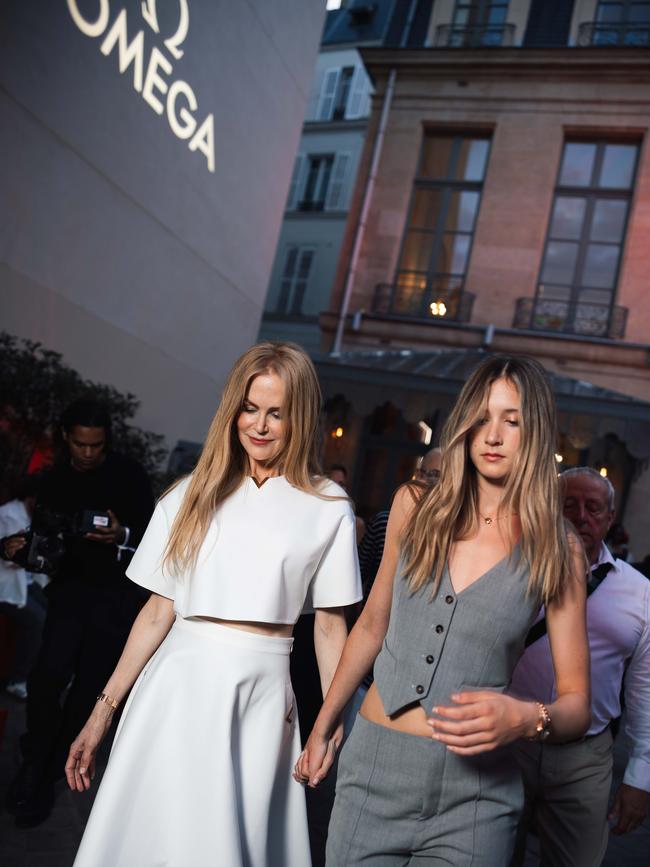‘Tell stories in the future again’: how Omega is using Olympians’ data
The chief executive of Swiss Timing Alain Zobrist and his team have a huge responsibility at the Olympics and Paralympics - timing people’s dreams.

It is hard to feel cynical about the Olympics. Not when your six-year-old tells you she’s only eight years younger than skateboarders Arisa Trew and Chloe Covell and maybe she will go to the Olympics too. Not when you’re in the Parc des Princes stadium for the football final and the crowd is roaringAllez Les Bleus!and you forget momentarily that you are not, in fact, French, and join in.
The joy of participating in a Mexican wave cannot be overstated. So too the recognition of commonality and connection in seeing such things as a French father comfort his crying son at the football when the results – like life sometimes – didn’t go his way.
As Paris 2024 chief Tony Estanguet said in his closing ceremony speech, for Parisians – for many of us – the Olympics turned out to be a coup de foudre, a love that hits hard. A lightning bolt.
Yes, of course, emotion is essential to the Olympics. But so too is data.

For Alain Zobrist, chief executive of Swiss Timing – the technology company owned by Swatch Group, the parent group of Omega, official timekeeper of the Olympic Games – data holds and shapes those emotions.
“(The Olympics) is the biggest event on Earth. So it’s not only the biggest sporting event, it’s the biggest event on Earth. We’ve got athletes who’ve trained their entire lives to be here. They come here to realise their dreams and we help them through that with our role and the services that we provide to them throughout the Olympics. So it’s very humbling,” says Zobrist.
It is a big responsibility to hold so many dreams.
“We can’t do any mistakes,” says Zobrist. That said, “everything has been going according to plan”.
Zobrist is speaking to The Australian at Omega House, the hospitality concept Omega first introduced during the London Olympics.
This year Omega House took over the Hôtel de Poulpry, Maison des Polytechniciens, built in 1703 and mere steps from the Musée d’Orsay in Saint Germain. Omega House played host to several events for thousands of guests and top ambassadors and athletes throughout the Games.
Attendees included Nicole Kidman and daughter Sunday, Cindy Crawford and daughter Kaia Gerber and the man formerly known as James Bond, Daniel Craig. Craig, as it turns out, loves the Olympics perhaps more than anybody, telling UK Esquire that after they finish, he buys a highlights DVD and watches it on repeat until the Paralympics start.

Omega House also displayed, as part of an exhibition of Omega’s history in timekeeping, its Speedmaster and Seamaster watches and connection to space, the original stopwatch used by the lone Omega timekeeper dispatched to the Los Angeles Games in 1932. There were examples too of the sensors, high-definition cameras, touch pads and other technologies used by Omega, official timekeeper for 31 Olympics, to measure time.
A stellar example of its capacity was the showstopping men’s 100m track final, American Noah Lyles winning by a five-thousandths of a second.
Zobrist however, in keeping with the spirit of the Olympics, is egalitarian on this. “We just did our job,” he says, “Now the story of the race (was) particular, but the work we did, it is just what we do.”
It is the work, he says, his team does for every sport.
This year Zobrist’s team sent 550 timekeepers and 35 tonnes of equipment to measure all the results of all athletes participating in 32 different sports across France – and Tahiti for the surfing.
All data gathered will be stored and analysed, as Zobrist puts it, to “tell stories in the future again”. Its Computer Vision systems track metrics that can tell such things as the height of a jump, the moment a diver enters the pool or the speed of a volleyball spike – providing a deeper understanding that can help improve an athlete’s performance.
Zobrist’s team will return for the Paralympics at the end of the month. Just as new sports require new ways to keep time, so too have technologies evolved for the needs of the Paralympians.

“We are using the same technology as during the Olympics, but there are some differences and it depends on the sports,” he says. “We’ve got specific technologies for deaf athletes, for example, so they wouldn’t hear the gunshots. So we use flashlights so they can see when the gun is shot … There are some differences if you use special photoelectric cells, for example, for wheelchair races, lower to the ground, to capture the wheelchairs. There are obviously different classes with fractured times … So there is these different rules, different software that we’re implementing. Slightly different but still, very simple.”
The way Zobrist will judge the success of this Games, and the some 500 other sporting events his team will keep time for in the course of a year, is always on one criteria: precision. “Measuring is very simple,” he says.
What timekeeping may look like in the future, he says, will be constantly evolving.
“We’re going to evolve in how we measure time. That was always something very important for us. Our history is official timekeepers, it’s how we measure time. It’s easy to measure time, very difficult to measure the right time. So there we’re certainly going to see evolutions and also with all the data that we generate, the understanding of what happens through time is also going to evolve.”
Annie Brown travelled to the Olympic Games as a guest of Omega.





To join the conversation, please log in. Don't have an account? Register
Join the conversation, you are commenting as Logout